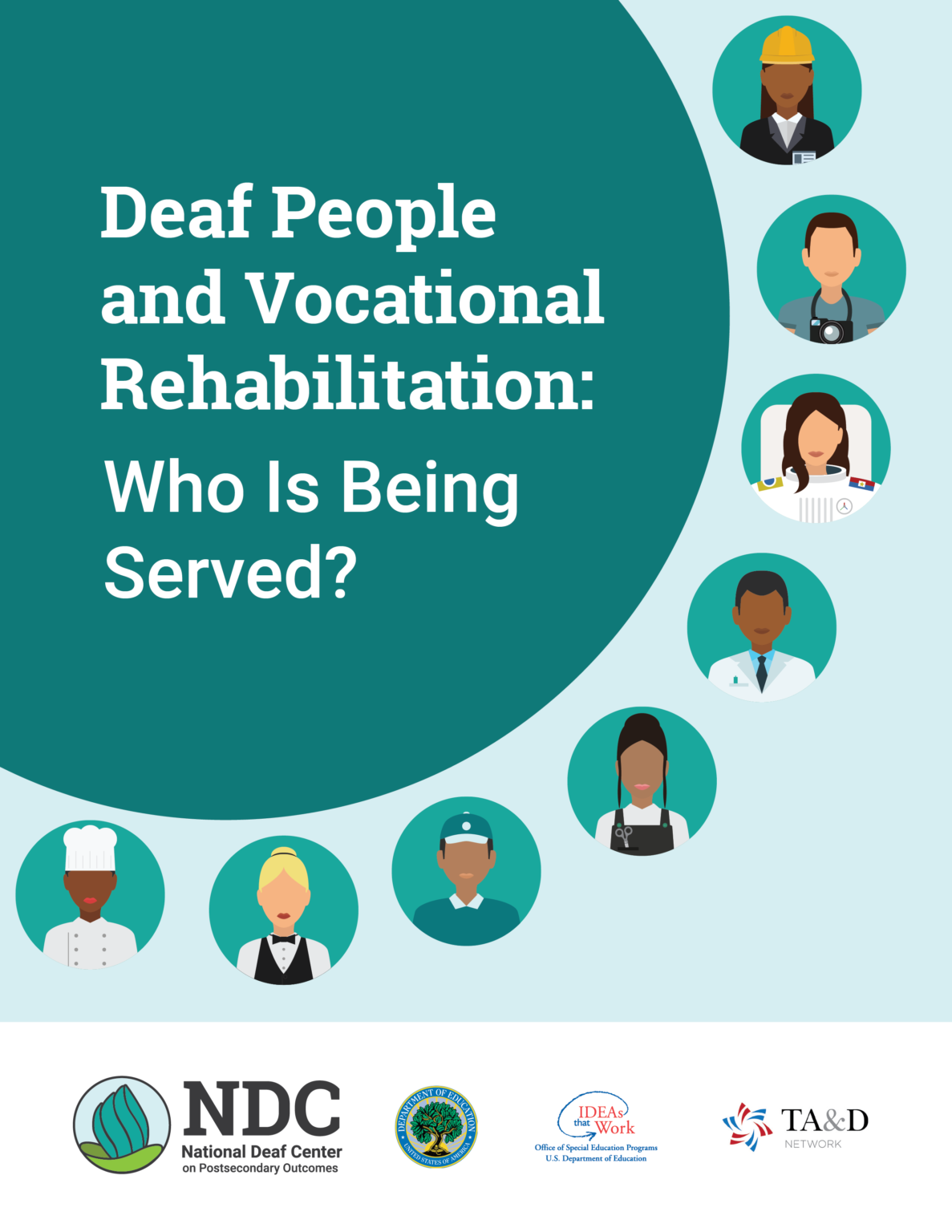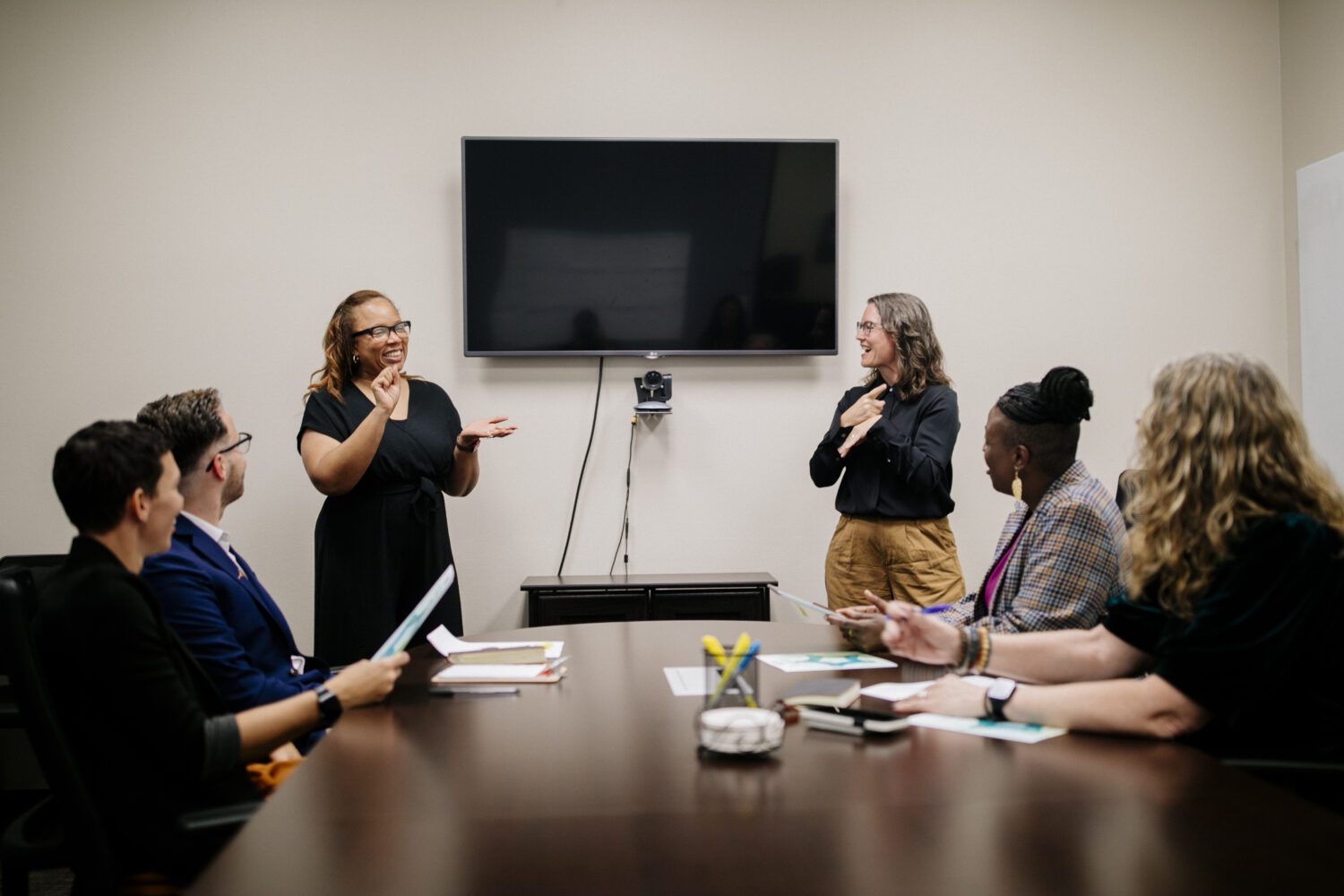Video description
Vocational rehabilitation (VR) services are necessary for thousands of deaf Americans to successfully join the workforce, make career plans, and reach their employment goals.
But U.S. VR agencies can do a better job of serving deaf people, according to a new nationwide report by the National Deaf Center on Postsecondary Outcomes (NDC). Its findings show significant gaps in who is being served — including fewer Black, young, female, and disabled deaf people than national averages — and deaf people are more likely to be placed on waiting lists.
“VR services are a crucial part of systems designed to increase access and opportunities for deaf people — to help overcome the barriers of discrimination, low expectations, and inequitable environments,” said Carrie Lou Garberoglio, PhD, NDC’s Associate Director and a co-author of the report. “Deaf people want the same opportunities as hearing people to be gainfully employed, leading to greater financial stability and quality of life.”
Better Understanding of Who is Being Served
Deaf People and Vocational Rehabilitation: Who Is Being Served? is the first report of its kind to provide national-level analysis into the Rehabilitation Services Administration’s Case Service Report data about the deaf people who have contacted VR agencies and received services. The report’s findings and recommendations can help VR agencies improve services and outcomes for deaf people, as well as recruitment of both clients and the staff who serve them. In 2017, VR agencies across the nation received 569,530 new applications and served 975,359 people, leading to 175,458 improved employment outcomes. Of those people who applied for VR or received services, over 94,000 were deaf people, accounting for 7.9% of all VR case files. Of those deaf clients, 36% had additional disabilities — a lower percentage than the U.S. Census (55%), which raises a concern that many deafblind and deafdisabled people are not receiving support from VR or their additional disabilities were not identified within the VR system. On average, a greater percentage of deaf men applied for or received VR services (55.6%), even though among deaf people, a slight majority are women (51.7%).Fewer BIPOC and Young Deaf People Receive VR Services
Only 36% of deaf people in the VR database are Black, Indigenous, and People of Color (BIPOC), 8 percentage points lower than the average. Systemic racism negatively affects employment opportunities and experiences for deaf BIPOC, who are largely underemployed and underpaid. The lower incidence of deaf BIPOC participating in VR services is a significant area of concern. VR agencies may need to strengthen relationships with deaf BIPOC communities and recruit more deaf BIPOC VR counselors and service providers. There are also far fewer deaf people under 25 years old (28%) compared to the average of 48%. The majority of deaf people in the VR database are older, suggesting that the type of services deaf people need from VR may differ from those that other disability groups need, and the services continue to be needed throughout a deaf person’s life. As a result, a smaller percentage of deaf people received pre-employment transition services (Pre-ETS) than other disability groups. VR agencies may need to increase their capacity to reach out to deaf youth and provide Pre-ETS.Deaf People Are More Likely to Be Waiting for Services
Once they have contacted or are receiving services with VR, 9.2% of deaf people have experienced being placed on a waiting list, a higher percentage compared to other disability groups. This may be due to limited funding, since some states must prioritize services for people with the most significant disabilities and those who are in danger of losing their jobs. However, the report authors recommend VR agencies may need to evaluate policies and procedures related to placing deaf people on waiting lists and ensure the availability of appropriate assessment and identification of additional disabilities.Gaps in VR Services Can Lead to a Reduced Quality of Life
In the United States, there is a significant gap in employment of deaf people. Only 53% of deaf people are employed compared to 75% of hearing people, despite positive college enrollment trends and improvements in legal policies surrounding access for deaf people, particularly through the Americans with Disabilities Act. VR services are designed to address that gap and can include a variety of components that vary state by state, including tests to determine customized plans, career counseling, accommodations, financial support for education or training, transportation, and even internet access. For younger people ages 14-21 who are deaf and/or disabled, Pre-ETS provided by VR include job exploration tools, workplace-based readiness training and learning, postsecondary counseling, and instruction in self-advocacy. Research shows the benefits of work-based learning programs for deaf youth, which can:- Develop self-confidence and improve motivation for academics and careers;
- Boost communication and problem-solving skills; and
- Lead to improved outcomes in employment and higher education after high school, specifically higher levels of long-term employment.









